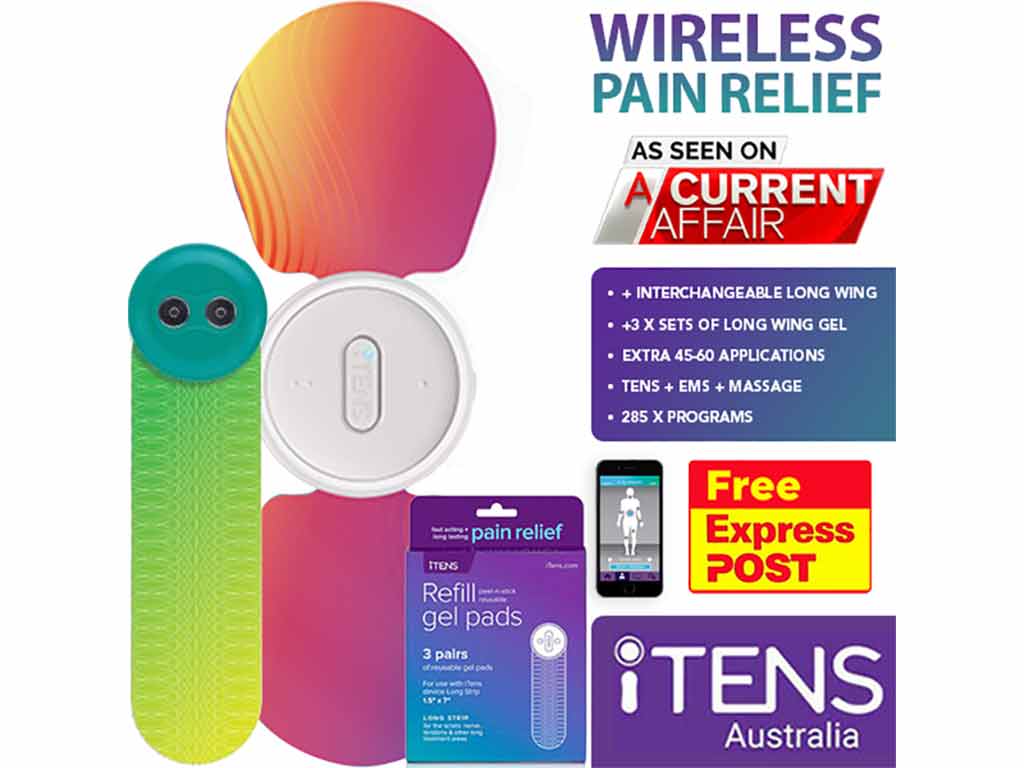
Transcutaneous Electrical Nerve Stimulation (TENS) is a therapy designed to provide a form of pain relief. It utilises a battery-powered machine that dispatches electrical currents to the body. Accordingly, a medical TENS machine works by disrupting pain signals travelling to the brain. The electrical impulses can also stimulate the production and release of endorphins. Furthermore, TENS therapy presents several benefits to users. It is non-invasive, drug-free, customisable, an adjunctive treatment, and can treat various types of pain.
Living with pain can be debilitating, affecting every aspect of life. Hence, finding ways to manage and cope with it is essential for overall well-being. Traditional methods of pain relief include medications and physical therapy. However, these forms of treatment are not always practical. As such, it has led to the popularity of TENS electrotherapy pain relief. It is a safe and effective treatment. This article will present the medical TENS device, including how it works and its benefits.
What is a Medical TENS Machine?
A medical TENS machine serves as a vital tool in the field of pain management. It functions by sending electrical impulses through the skin to the underlying nerve fibres. Accordingly, this innovative device finds its place in the hands of various users suffering from conditions. Pain clinics and medical professionals commonly recommend TENS therapy. They recognise its potential to provide effective pain relief.
TENS devices come in wired and wireless models. Wired TENS units are connected to the electrode pads via physical wires. These devices are typically more affordable. Conversely, wireless TENS units offer the advantage of mobility and discretion. It allows users to wear the device under their clothing without managing lead cables. It makes them ideal for use on the go.
Device features vary widely but often include adjustable settings. It allows users to tailor the pulse rate, duration, and pulse amplitude. Some advanced models come with pre-set programs for specific body areas or types of pain. It simplifies the use for individuals who may not be familiar with the intricacies of TENS therapy. Additionally, recent advancements include digital displays and rechargeable batteries.
Brief History of TENS Devices
- 63 AD: Historians reveal that a doctor treated pain by standing on an electric fish at the seashore.
- 16th to 18th Centuries: Scientists began experimenting with electrical devices to alleviate discomfort.
- 1960s: Researchers introduced the Gate Control Theory of Pain.
- 1970s: The first portable TENS units emerged. These devices became quickly recognised for their potential to relieve pain without medication.
- 1980s and 1990s: TENS machines became smaller, more affordable, and easier to use.
- 21st Century: Manufacturers introduced digital models with customisable settings, rechargeable batteries, and wireless capabilities.
- Over the years, a surge in scientific research aimed at understanding the precise mechanisms of TENS.

How Medical TENS Machine Works
Foremost, the medical TENS machine taps into the Pain Gate Theory. It suggests there is a metaphorical gate in the spinal cord that can either let pain messages through to the brain or block them. The electrical pulses can flood the nervous system with what can be considered “safe” signals. These signals travel faster, effectively closing the gate to pain signals. As a result, it lessens the perception of discomfort.
Accordingly, the TENS device stimulates the production of endorphins. Endorphins are the natural pain relievers of the body. These are chemicals that can create a sense of well-being and relieve discomfort. Nevertheless, the electric currents encourage the body to produce these helpful chemicals. It increases the pain tolerance of an individual and reduces the sensation of discomfort.
In addition, the unit plays a role in enhancing blood circulation. Improved blood flow is significant in pain management and recovery. The electrical pulses encourage the blood vessels to expand, which allows more blood to flow to the affected area. Hence, this increased circulation brings with it more oxygen and nutrients. It also aids in the removal of waste products.
Frequency and Intensities
A TENS device employs a wide range of frequencies and intensities to manage discomfort. The frequency refers to the number of electrical impulses delivered per second, measured in Hertz (Hz). TENS units typically offer low (1-10 Hz) and high (50-120 Hz) frequencies. Low frequencies stimulate the production of endorphins. Meanwhile, high frequencies work by quickly blocking the pain signals before they reach the brain.
On the other hand, intensity refers to the strength of the electrical pulses, measured in Milliamperes (mA). The correct intensity varies between individuals and depends on the type of pain, the treatment area, and personal sensitivity.

Benefits of Using a Medical TENS Machine
Firstly, the non-invasive feature of medical TENS machines means they can provide relief without requiring surgical interventions or injections. It significantly reduces the risk of infection and complications. Secondly, TENS therapy offers a drug-free approach to pain relief. It is beneficial for individuals seeking alternatives to pharmaceuticals due to concerns about side effects and dependency.
Thirdly, customisability is another critical benefit. TENS units allow users to adjust the electrical stimulation. It ensures that individuals can find the most effective settings for their condition. It enhances the effectiveness of the treatment. Fourthly, TENS treatment is highly versatile. It can be used to address a wide variety of pain types. This makes them a valuable tool for people with various management needs.
Additionally, TENS therapy serves an adjunctive role. It can be used alongside other treatment forms, such as physical therapy. It provides a more comprehensive pain management approach. Finally, the portability of TENS devices is a significant advantage. Their compact size allows individuals to use them at home, work, or on the go. It ensures that pain relief is always within reach.
Applications of TENS Therapy
TENS therapy offers immediate relief to sudden acute pain conditions. It often arises due to head pains, period cramps, surgeries, and injuries. Accordingly, TENS treatment can manage persistent chronic pain conditions. It may include arthritis, fibromyalgia, neck, and backaches.
Additionally, neuropathic pain often responds well to TENS therapy. It stems from nerve damage or malfunction. It is a discomfort associated with conditions like diabetic neuropathy, nerve entrapment syndromes, and sciatica. Moreover, TENS can provide relief to musculoskeletal pain. It involves the muscles, ligaments, tendons, or bones. It may include joint conditions, rheumatoid arthritis, and osteoarthritis.
Conclusion
In conclusion, a medical TENS machine is a device for pain management. The history of TENS devices dates back to 63 AD and has emerged throughout the years. Nevertheless, it operates by delivering electrical currents to the body via electrodes placed on the skin. These pulses can block the transmission of pain signals. It can also trigger the release of endorphins, the natural painkillers of the body. Additionally, the impulses can enhance blood flow in the treatment region.
The TENS unit can stream the electrical impulses at varying frequencies and intensities. It can deliver the frequencies at low (1 to 10 Hz) and high (50 to 120 Hz). The correct intensity should be solid yet comfortable. Furthermore, TENS presents numerous benefits. It is non-invasive, drug-free, customisable, and highly versatile. It also serves as an adjunctive treatment. The compact size of TENS units is also a significant advantage. Moreover, TENS can treat acute and chronic conditions.




















